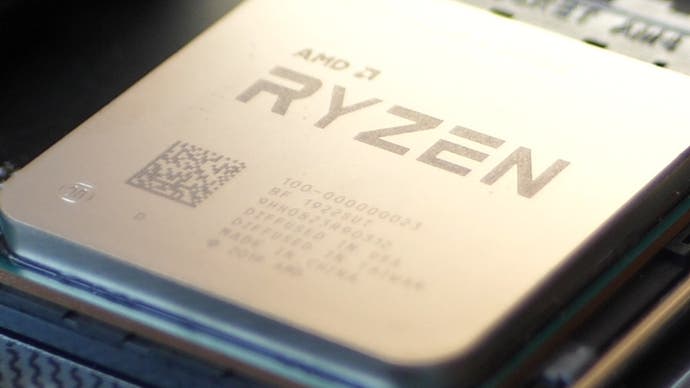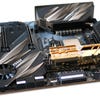AMD Ryzen 9 3900X vs Core i9 9900K review
Ryzen shines?
By now, the verdict is in: the $329 Ryzen 7 3700X is an excellent CPU that competes well against the $385 Intel Core i7 9700K in gaming and blows it out of the water in multi-threaded content creation tasks like video rendering or streaming. That's helped the 3700X become the most popular processor at one German retailer and lead to AMD outselling Intel in reports from Korea and Japan. But how does the Ryzen 9 3900X fare? We've tested it against Intel's top dog, the Core i9 9900K, to see which company claims the overall PC gaming crown.
First of all, let's discuss what we're dealing with. The Ryzen 9 3900X is a fully-enabled Zen 2 design, meaning it includes 12 cores and 24 threads spread across its two chiplets. That's four more cores and eight more threads than the Ryzen 7 3700X, so we expect to see significantly better performance in tasks like video rendering which are easy to break up and perform in parallel. The flagship chip also features a slightly higher single-core boost frequency than its mid-tier counterpart, which should translate into better single-threaded performance too.
Compared to past Zen and Zen+ designs, this is a whole different beast. I/O is shifted to its own die using a mature 12nm process, while each of the CPU chiplets uses a novel 7nm process that allows for greater performance than past generations while using less power (and therefore producing less heat). This architectural shift is accompanied by a series of small but still significant changes: the size of the L3 cache has doubled to ameliorate latency issues, a more efficient branch predictor is used and AVX instructions are finally handled properly.
| Ryzen 9 3900X | Ryzen 7 3700X | Ryzen 7 2700X | Core i9 9900K | Core i7 9700K | |
|---|---|---|---|---|---|
| Cores/Threads | 12/24 | 8/16 | 8/16 | 8/16 | 8/8 |
| Single-Core Turbo | 4.6GHz | 4.4GHz | 4.3GHz | 5.0GHz | 4.9GHz |
| Max All-Core Turbo | 4.1GHz | 4.3GHz | 4.1GHz | 4.7GHz | 4.6GHz |
| Cache | 70MB | 36MB | 20MB | 18MB | 14MB |
| TDP | 105W | 65W | 105W | 95W | 95W |
This all sounds great, but it's not clear just by looking at the spec sheet or reading the feature list how these processors will actually perform in games, particularly older titles that weren't engineered to make use of so many cores and threads. The only way to settle this is to run through a gauntlet of recent and not-so-recent games at different resolutions - so that's exactly what we've done.
Before we dive into the results, it's worth briefly touching on how we performed these tests. We set up a new Windows 10 installation - including the latest security and AMD scheduler patches - on fast SSD storage, with a Gigabyte 2TB PCIe 4.0 drive supplied by AMD for our Ryzen third-gen testing and SATA SSDs used on other platforms.
The Principal benchmarking was done on the entry-level £180 MSI MPG X570 Gaming Plus, with supplementary testing on a high-end motherboard, the £450 Prestige X570 Creation, with both boards supplied by MSI. While the Gaming Plus is the cheapest MSI option for the X570 platform, the Creation board might make sense for anyone considering heavy overclocking or using multiple PCIe 4.0 devices. That's because as well as robust power delivery and support for extreme memory overclocking beyond 4600MHz, the Creation board also includes active chipset cooling and a full complement of PCI-e 4.0 lanes. There's even a PCI-e 4.0 add-on card that allows for two extra M.2 drives to be connected. Meanwhile, second-gen Ryzen was tested on an £380 ASUS ROG Crosshair 8 and the Core i9 9900K was tested on an £480 ASUS ROG Maximus XI Extreme.
Cooling duties were split, with the Ryzen chips using the phenomenal AMD Wraith Prism air cooler that comes bundled with all Ryzen 7 and Ryzen 9 processors and the Core i9 9900K paired with a Gaming Storm Castle 240mm AiO. In each case, we used GSkill Trident Z Royal 3600MHz CL16 RAM provided by AMD, a hefty 850W PSU and an open-air test bench.
While gaming performance will be the focus here, we'd be remiss to not mention performance in content creation tasks like video rendering and transcoding. Our very own Alex Battalgia has waxed lyrical about the relative strength of the 3900X compared to his previous 1700X-powered workstation when it comes to cranking out videos, but is there a noticeable gap between second and third-gen Ryzen as well? And how do Intel's chips stack up?
Once place we can go to get some answers is Cinebench, a realistic - if limited - benchmark that mimics a rendering task in professional video software Cinema 4D. The old R15 version of the test could be completed by modern CPUs before they reached their usual temperature limits, so the new R20 revision includes a more challenging workload which is more reflective of sustained performance. Both single-threaded and multi-threaded tests are offered, which allow us to get a sense of how Ryzen has evolved gen-on-gen against the backdrop of Intel's offering.
The Core i9 9900K remains the single-core king here, but the Ryzen 9 3900X is just a few points behind thanks largely to the 21 per cent generational advantage we saw for the 3700X over the 2700X. This close result suggests that the 3900X should remain competitive even in older games that haven't been architected for modern systems, something you couldn't say of first or second-gen Ryzen, but we'll have to see how these titles play out. The multi-threaded results see the 3900X come out on top by 38 per cent, thanks to the greater number of cores and threads AMD's flagship chip is packing.
Video encoding in popular open source tool Handbrake is an even more realistic example, and that's where we'll turn to now. For this test, we encoded the same sample video file using the x264 (h.264) and x265 (HEVC) compression standards on the Production Quality Standard preset at CRF 18. The Ryzen 9 3900X shows the same general trends as the Ryzen 7 3700X, with a small boost in h.264 encoding speeds and a major uplift in HEVC encoding thanks to that better AVX instruction handling we mentioned earlier. The greater core count puts even the Core i9 9900K to shame, with AMD's current number one consumer CPU leading the 9900K by 37 per cent for h.264 and 25 per cent for HEVC - an outstanding result.
It's even more impressive when you look at the power consumption figures, as measured from the wall during the HEVC encode test. AMD's 7nm chiplets propel the Ryzen 9 3900X to 9900K-beating levels of performance while consuming much less power; we measured a maximum of 228W compared to 266W for the Intel system, a difference of around 15 per cent.
| Ryzen 9 3900X | Ryzen 7 3700X | Ryzen 7 2700X | Core i9 9900K | Core i7 9700K | |
|---|---|---|---|---|---|
| Cinebench R20 1T | 514 | 494 | 408 | 520 | 498 |
| Cinebench R20 MT | 7032 | 4730 | 3865 | 5090 | 3922 |
| Handbrake h.264 | 51.80fps | 35.05fps | 27.31fps | 37.87fps | 28.77fps |
| Handbrake HEVC | 20.29fps | 14.67fps | 10.04fps | 16.22fps | 13.12fps |
| HEVC Power Consumption | 228W | 152W | 224W | 266W | 171W |
These are solid results to say the least, but let's not get carried away. Our passion is testing in-game performance, and that can be an entirely different kettle of fish from synthetic benchmarks and content creation workloads. AMD has always been competitive when it comes to getting work done, but can they beat Intel at home with superior gaming results too and really push the boat out?
To answer this question one way or another, we needed to find significant - and repeatable - game scenes that could show the differences between different gaming CPUs. This is harder than it sounds, as CPU-limited scenarios are much more susceptible to random interference from operating system processes and simple run-to-run variance than GPU-bound situations. Even with all things equal, different sections of the same one-minute test scene can show Intel ahead of AMD and vice versa. That's why we recommend checking out the video review embedded above or at least watching the real-time metrics as each test scene plays out, as you'll get a more substantial understanding of these chips' relative performance than you will from looking at the average or worst one per cent frametime metrics in isolation. After fighting through the bugbears and pushing back the release of this review, we're finally ready to share our findings.
We tested each game at 1080p, 1440p and 2160p, using the best consumer GPU on the market: the Nvidia GeForce RTX 2080 Ti. The 1080p benchmarks reflect a high-end system aiming for extremely high frame-rates to make full use of high refresh rate monitors, although this does mean dealing with the stutter that often accompanies CPU-bound scenarios. The 1440p results will be relevant for anyone at the current resolution "sweet spot", where a mid-range to high-end system can achieve frame-rates in excess of 60fps and often closer to 120fps without sacrificing visual fidelity. Finally, our 4K results represent what is arguably the most balanced scenario, where there's a decent amount of CPU overhead and you're more likely to be GPU-bound outside of a few esports titles.
AMD Ryzen 9 3900X analysis
- Introduction, hardware breakdown, test system [This Page]
- Gaming benchmarks: Assassin's Creed Odyssey, Battlefield 5, Far Cry 5
- Gaming benchmarks: Crysis 3, Metro Exodus, Kingdom Come Deliverance, The Witcher 3
- Gaming benchmarks: Ryzen vs Core - memory bandwidth analysis
- Ryzen 9 3900X: the Digital Foundry verdict









